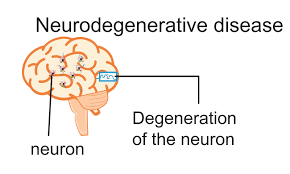First step in treating some neurodegenerative disorders
Researchers at IISc Bangalore have identified a protein in yeast cells that dissolves RNA-protein complexes, also known as RNA granules.
What is mRNA?

- Messenger RNA (mRNA) is a single-stranded RNA (Ribo Nucleic Acid) molecule that is complementary to one of the DNA strands of a gene.
- The mRNA is an RNA version of the gene that leaves the cell nucleus and moves to the cytoplasm where proteins are made.
- During protein synthesis, an organelle called a ribosome moves along the mRNA, reads its base sequence, and uses the genetic code to translate each three-base triplet, or codon, into its corresponding amino acid.
What are RNA granules?
- Inside the cytoplasm of any cell there are structures made of messenger RNA (mRNA) and proteins known as RNA granules.
- Unlike other structures in the cell (such as mitochondria), the RNA granules are not covered and confined by a membrane.
- This makes them highly dynamic in nature, thereby allowing them to constantly exchange components with the surrounding.
- RNA granules are present in the cytoplasm at low numbers under normal conditions but increase in number and size under stressful conditions including diseases.

Why are they unique?
- A defining feature which does not change from one organism to another (conserved) of the RNA granule protein components is the presence of stretches containing repeats of certain amino acids.
- Such stretches are referred to as low complexity regions.
- Repeats of arginine (R), glycine (G) and glycine (G) — known as RGG — are an example of low complexity sequence.
Functions of RNA granules
- Messenger RNAs are converted to proteins (building blocks of the cell) by the process of translation.
- RNA granules determine messenger RNA (mRNA) fate by deciding when and how much protein would be produced from mRNA.
- Protein synthesis is a multi-step and energy-expensive process.
- Therefore, a common strategy used by cells when it encounters unfavorable conditions is to shut down protein production and conserve energy to deal with a stressful situation.
- RNA granules help in the process of shutting down protein production.
- Some RNA granule types (such as Processing bodies or P-bodies) not only regulate protein production but also accomplish degradation and elimination of the mRNAs, which in turn helps in reducing protein production.
What is the recent study?
- Researchers concluded that low complexity sequences which normally promote granule formation, in this case promote the disintegration of RNA granules in yeast cells.
- They observed that the identified protein Sbp1 is specific for dissolving P-bodies and not stress granules which are related RNA granule type also present in the cytoplasm.
Significance of the study
- This study has highlighted the potential of amino acid repeats (RGG) as a therapeutic intervention.
- The study may help analyze the effect of repeat sequences in genetically engineered mice that accumulate insoluble pathological aggregates in brain cells.
- This could possibly help in treating neurodegenerative disorders such as Alzheimer’s disease.
Conclusion
- At the onset, the aim of this study was not to look for possible interventions for neurodegenerative disorders.
- Instead, the study was driven by our quest for answering a simple but powerful fundamental question about how RNA granules fall apart.
- An important and satisfying take-home message from this study is that asking and addressing fundamental questions in science is equally important as doing ‘applied’ research.
Exam Track Away
Prelims Take Away
- DNA
- Mitochondria
- Neurodegenrative Diseases
- mRNA
- RNA


